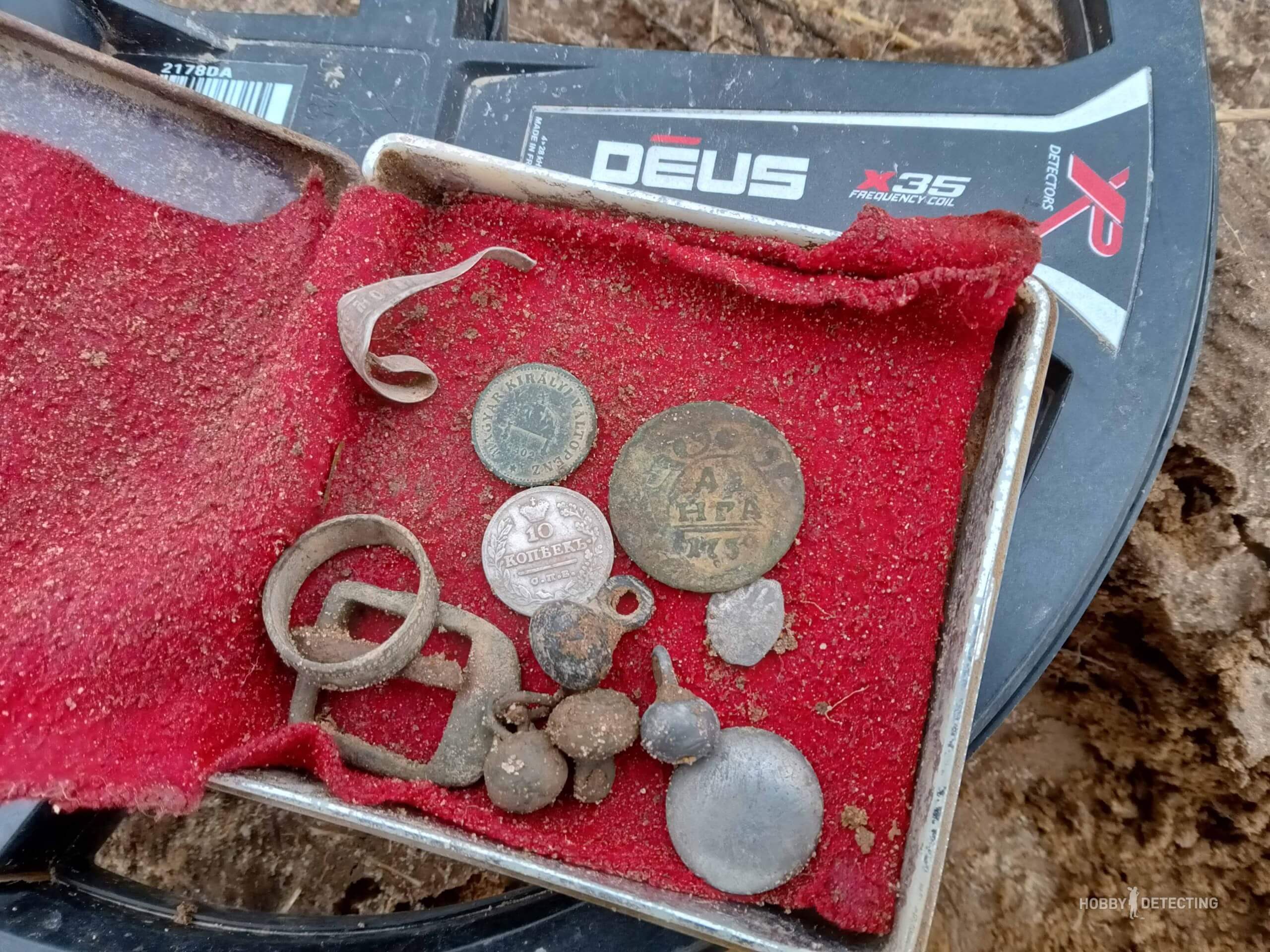Random field exploration? Sharing my experience
Good mood to you, dear readers of our blog.
Winter is coming to an end, which means the warm March sun and a new season are just around the corner. Well, in the meantime, you can once again go through the finds found over the past season and think about what good places you can still visit. Or look for new ones.
I know that many diggers have one favorite method of finding new good places to dig. This is reconnaissance of fields along the route to the designated point. The principle of reconnaissance is simple and can be expressed in one phrase. “Oh look! The field has been plowed! Let's check. Maybe there is something???” I do exactly the same thing when I drive past a freshly plowed field; I’ve never been to the court before. And therefore – who the hell isn’t joking. Thanks to such constant forays into unfamiliar fields, I developed my own system for determining the prospects of a field and the likelihood of doing a good job in this field.
Anyway. Less words, more meaning.

How is the field plowed? Hulled (disk-ed), rough plowing (with suitcases) or plowing before sowing. Dear friends, my extensive experience has shown that a cop on a flat, peeled field, even if there are no settlements or roads there according to old maps, is always more effective than a cop on a tract plowed with “suitcases.” The simple physics of covering the soil surface with a coil.
Therefore, if I see two fields, one is plowed even just with lumps, and the second is disced evenly, like sand on the beach, I definitely choose the second field.

Recently, many farms have begun to pursue a very aggressive system of tillage. This is when the field is not plowed deeply, but simply disked the stubble, filled with fertilizers, then disked again, and then the field is sown within a couple of days. Often, a field is disced in the fall and sown in the spring, so in such fields you can dig until frost, and in the spring until the sowing season in May.
The main thing here is not to confuse a disced field with a field that has already been sown.
Checking the field using old maps. In order not to wander around the new field in search of accidents, you can, first, look at old maps where the roads previously passed here, and even better if the roads converged at intersections. A sure sign that you need to go there first. At the crossroads there could be single-yard buildings, barns, forges and farmsteads.

The method is very effective, although it does not work every time. So, for example, this year, in a field unfamiliar to me, I came to the crossroads of three roads at once, that is, on the map there was such a figure with five rays. And, as a result, I dug very effectively in that place for another month.
Vaccine traffic jams. It may seem strange, but this is another sign of a promising field. And that's the point. Central Russia is a zone of risky farming. 100-150 years ago there were two or even three times less quality arable land in our latitudes. Most of what is arable land today was then grassland with acidic soil or wetlands. Such lands began to be plowed with the active use of chemical fertilizers and full-scale reclamation work.

What does this have to do with vaccines? You ask. And despite the fact that these plugs ended up in fields with manure from MTF. And manure, even in those days, was considered a natural fertilizer, so it was scattered in areas with good, solid soil. Where our grandfathers and great-grandfathers plowed and sowed.
Large colored debris and other associated items. Strange as it may seem, serfs in the Russian Empire could earn money for themselves and their masters not only by plowing and sowing the land, but also by small-scale handicraft production. If the production was fire hazardous, for example, cloth production, hemp or lard production, then production barracks were placed away from villages and villages. And, if you find such a place, you will be digging such a field for more than one season.

On the field, such places are well identified by the presence of broken bricks, incomprehensible pieces of something made of copper, fragments of white sandstone, ceramics and an increase in the density of iron signals. The presence of large colored debris on the field indicates that this place has not been dug before. And even if they were digging, it wasn’t very active.
Philosophy. This year, towards the end of the season, I found just the perfect field for digging. Finds fire, walking is easy, sandy, not a field, but a dream and joy. And so, on my second trip, a UAZ “Patriot” drives up to the field, a comrade gets out, takes out a device and walks towards me with a lazy, unhurried gait. We talked to him. It turned out that the man lives in a neighboring village, and his house is directly visible from the field. Word by word he tells me. That he doesn’t really like this field, there are few finds here and in general there are better places in the area. He walked around a bit, did some digging not far from me, got ready and left. At first I was happy, but why, people will buy MD, but don’t know how to use it. Such a gorgeous field, but the local digger didn’t find anything interesting for himself here.
I go digging, happy, the whole field is mine. And then I replayed the comrade’s phrase one more time and suddenly understood the meaning of “there are better places in the area.” And then, something struck me…

